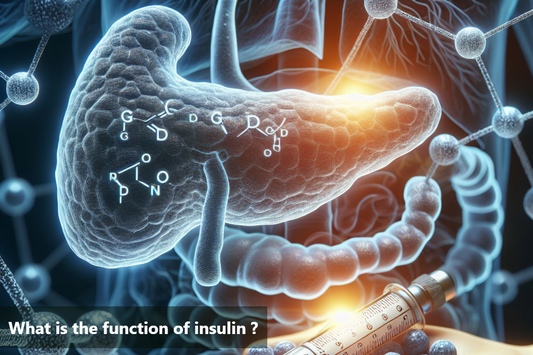The Random Blood Sugar (RBS) test measures glucose levels in the blood at any given time, providing insight into blood sugar levels and helping monitor for diabetes. Understanding normal RBS levels is crucial for assessing health. These levels fall within a specific range, helping individuals track blood sugar status. Variations are normal, but persistently high or low levels may indicate a problem. Monitoring RBS levels assists in early detection of health issues and timely treatment. Stay tuned for details on the normal range of RBS levels.
What is RBS Normal Range?
The Random Blood Sugar (RBS) test is a common blood test used to measure the glucose levels in your blood. Understanding the normal range of RBS levels is crucial for monitoring your overall health. The normal range for RBS levels typically falls between 70 to 125 milligrams per deciliter (mg/dL). However, it's important to note that these values may slightly vary depending on the laboratory standards.
When evaluating RBS levels, values below 70 mg/dL may indicate hypoglycemia, while levels above 125 mg/dL could suggest hyperglycemia. It's essential to consult with a healthcare provider for a proper diagnosis and interpretation of your RBS test results.
Additionally, factors such as age, diet, medication, and underlying health conditions can influence RBS levels. Maintaining a healthy lifestyle, including a balanced diet and regular exercise, can help regulate RBS levels within the normal range.
|
Test |
Normal |
Prediabetes |
Diabetes |
|---|---|---|---|
|
Fasting Blood Glucose (FBG) |
70-100 mg/dL |
100-125 mg/dL |
≥126 mg/dL |
|
Postprandial Blood Glucose (PPBG) |
<140 mg/dL |
140-199 mg/dL |
≥200 mg/dL |
|
Random Blood Glucose |
<200 mg/dL |
N/A |
≥200 mg/dL (with symptoms of diabetes) |
Factors Affecting RBS Levels
-
Diet: Consuming sugary or high-carbohydrate foods can cause a spike in RBS levels. Indulging in sweets or sugary beverages can result in a temporary increase in blood sugar levels.
-
Physical Activity: Regular exercise like walking, jogging, or cycling helps regulate RBS levels and keep them within the normal range. Engaging in physical activities plays a significant role in managing blood sugar levels.
-
Stress: Under stress, the body releases hormones like cortisol and adrenaline, causing blood sugar levels to rise. Managing stress through relaxation techniques, mindfulness, or hobbies can aid in stabilizing RBS levels.
-
Medication Intake: Certain medications may affect blood sugar levels, impacting RBS readings and overall management.
-
Illness: Illness can lead to fluctuations in RBS levels, affecting overall blood sugar control and health.
-
Sleep Patterns: Lack of sleep can also impact RBS levels, emphasizing the importance of maintaining healthy sleep patterns for optimal blood sugar management.
Interpreting RBS Test Results
Interpreting the results of an RBS test is crucial for understanding our blood sugar levels and overall health status. The normal range for RBS levels typically falls between 70 to 140 mg/dL. Values within this range indicate a healthy blood sugar level.
When interpreting RBS test results, it is important to consider whether the value obtained is within this normal range. If the RBS level is below 70 mg/dL, it may indicate hypoglycemia, which can lead to symptoms like dizziness and confusion. On the other hand, if the RBS level exceeds 140 mg/dL, it may suggest hyperglycemia, signaling potential issues like diabetes.
If your RBS test results fall outside the normal range, it is advisable to consult a healthcare provider for further evaluation and guidance. They can provide recommendations on lifestyle changes, dietary adjustments, or medication if needed to manage blood sugar levels effectively.
Understanding and monitoring RBS levels regularly can help in early detection of any abnormalities and facilitate timely interventions to maintain optimal health. It is essential to prioritize regular RBS testing as part of your overall wellness routine.
To conclude:
The normal range of Random Blood Sugar (RBS) levels is typically between 70 to 140 mg/dL. Monitoring and understanding these levels can help prevent complications related to blood sugar. By maintaining RBS within this range, individuals can manage their health effectively. Fluctuations may signal health issues or the need for lifestyle changes. Regular checks can detect conditions like diabetes early. A balanced diet and exercise can help keep RBS levels normal. Consult healthcare professionals for guidance on test results and necessary steps for overall well-being. Being aware of RBS levels and monitoring diligently are crucial for preventive healthcare to improve quality of life and health outcomes.
DiabeSmart is the first food range exclusively crafted for diabetics. Enjoy clinically tested, delicious products that let you keep your favorite food habits while managing your blood sugar levels effortlessly.
FAQs:
-
What is the normal range for Random Blood Sugar (RBS) levels?
The normal range for RBS levels is typically 70-140 mg/dL.
-
What does it mean if my RBS levels are above the normal range?
Elevated RBS levels above 140 mg/dL may indicate the presence of diabetes or pre-diabetes and should be further evaluated by a healthcare professional.
-
Can RBS levels fluctuate throughout the day?
Yes, RBS levels can vary based on factors like diet, physical activity, stress, and medications, which is why it's important to monitor trends over time.
-
How often should I check my RBS levels?
The frequency of checking RBS levels depends on individual health conditions, but it is typically recommended to check fasting levels in the morning and occasionally monitor post-meal levels.
-
Are there any specific symptoms associated with high or low RBS levels?
Yes, symptoms of high RBS levels may include increased thirst, frequent urination, fatigue, and blurred vision, while low RBS levels can cause symptoms like dizziness, sweating, confusion, and weakness.
This Blog post is an initiative by DiabeSmart, to provide accurate and Nutritionist / Doctor approved information related to Diabetes. DiabeSmart is India's first Food brand designed specifically for Diabetics, that has been clinically tested on Diabetics and Pre-Diabetics to deliver 55% - 70% lower Sugar spikes. DiabeSmart is part of Lo! Foods - India's leading brand for Everyday Functional Health foods.















